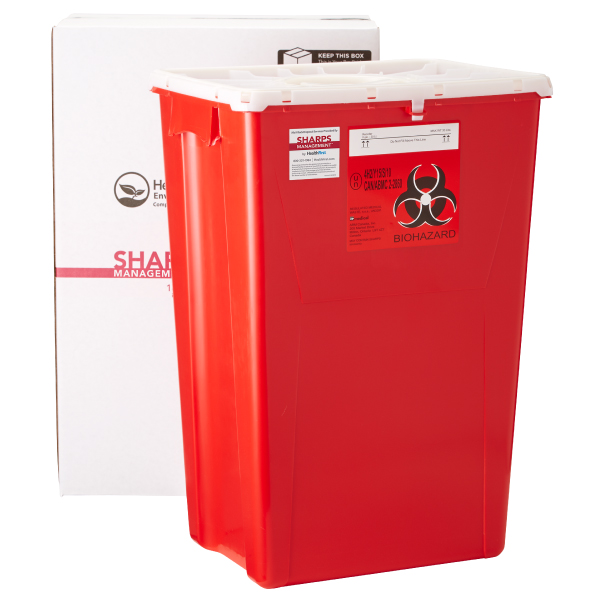Environmental Responsibility: The Eco-Friendly Method to Medical Waste Disposal
Environmental Responsibility: The Eco-Friendly Method to Medical Waste Disposal
Blog Article
Comprehending the Various Kinds of Waste Disposal Techniques
In the realm of waste monitoring, the selection of disposal techniques offered today is huge and differed, each approach serving a distinct function in attending to the obstacle of garbage disposal. click here. From reusing techniques that intend to give brand-new life to products, to the intricate processes of harmful waste monitoring, the landscape of waste disposal is complex yet vital for ecological sustainability. Understanding the nuances of these different methods not just loses light on the relevance of accountable waste monitoring yet also motivates us to reconsider our method in the direction of garbage disposal in a swiftly evolving world

Recycling Methods
Recycling methods are vital for sustainable waste management techniques in both property and industrial setups. medical waste removal service. By carrying out effective recycling strategies, a significant quantity of waste can be diverted from garbage dumps, saving natural resources and reducing the ecological effect of manufacturing processes
In suburbs, curbside recycling programs play a vital duty in encouraging houses to separate recyclable products from general waste. Materials such as paper, plastics, glass, and steels can be sorted and accumulated for processing into brand-new products, minimizing the need for basic materials and energy-intensive manufacturing processes.
Industrial centers also rely upon reusing methods to lessen waste generation and promote a circular economic situation. By executing closed-loop systems, businesses can recycle products within their production processes, minimizing prices and environmental footprint. medical waste removal. Furthermore, commercial recycling programs often include collaborations with specialized reusing centers to guarantee that materials are appropriately arranged, refined, and reintegrated into the supply chain
Composting Methods

Aerated fixed stack composting involves blending organic waste products in a big pile and regularly transforming it to guarantee appropriate aeration. This approach is effective for large composting procedures. On the other hand, vermicomposting utilizes earthworms to break down raw material into nutrient-rich spreadings. This technique is fit for smaller-scale procedures and households.
In-vessel composting entails placing organic waste in a shut container with regulated conditions for temperature and aeration. Windrow composting consists of creating long rows of natural waste and routinely turning them to advertise disintegration - medical waste disposal.
Land Fill Disposal
Land fill disposal is a generally made use of approach for handling waste that can not be recycled or composted. Methane gas, a byproduct of breaking down organic waste in land fills, is often accumulated and made use of as a resource of sustainable energy. Initiatives to minimize reliance on landfills consist of advertising waste reduction, recycling, and discovering alternate waste disposal methods to minimize the ecological footprint associated with typical garbage dump disposal methods.

Waste-to-Energy Incineration
Incineration of waste for power generation is a technique increasingly being thought about as a choice to traditional garbage dump disposal strategies. Waste-to-energy incineration involves the combustion of waste products at heats, usually in specialized centers designed to produce power or heat through the process - click here. This strategy not only minimizes the quantity of waste that would otherwise be predestined for landfills but likewise uses the heat created throughout incineration to create energy
One of the crucial advantages of waste-to-energy incineration is its capability to produce power while reducing the environmental effect contrasted to conventional landfill disposal techniques. By transforming waste right into power, this method assists in minimizing greenhouse gas exhausts and dependence on fossil fuels for energy generation. Furthermore, waste-to-energy centers are equipped with advanced air pollution control innovations to alleviate possible toxic wastes launched during the combustion procedure.
Hazardous Waste Management
.jpg)
Considering the crucial significance of responsible waste management practices, particularly in the world of ecological sustainability, the emphasis currently moves towards the intricate domain of Contaminated materials Monitoring. Contaminated materials presents considerable risks to both human health and the setting, requiring specialized handling and disposal strategies. Typical examples of hazardous waste include chemicals, batteries, pesticides, and electronic waste.
Harmful Waste Administration includes the identification, collection, transport, treatment, and disposal of materials deemed potentially dangerous or dangerous. This process calls for adherence to stringent regulations and guidelines to mitigate negative effect on ecosystems and public wellness. Various approaches are employed in taking care of dangerous waste, consisting of recycling, protected land fills, encapsulation, and chemical treatment.
Correct Hazardous Waste Monitoring is essential for protecting against contamination of soil, water resources, and air pollution. It is necessary for industries, labs, medical care facilities, and various other generators of unsafe waste to execute durable management techniques, training programs, and emergency situation response prepares to make certain the safe handling and disposal of these materials. Failing to take care of contaminated materials properly can have far-ranging effects, underscoring the value of attentive and responsible techniques in this area.
Conclusion
In verdict, waste disposal strategies play a critical duty in handling and lessening the effect of waste on the environment. It is important for people and sectors to click here understand the various waste disposal methods offered and choose the most appropriate approach for lasting waste administration.
In the realm of waste monitoring, the variety of disposal methods available today is vast and differed, each technique serving a distinctive function in dealing with the challenge of waste disposal. click here. From recycling methods that intend to provide new life to materials, to the intricate procedures of unsafe waste monitoring, the landscape of waste disposal is complicated yet important for environmental sustainability. Comprehending the subtleties of these different techniques not just drops light on the importance of liable waste monitoring yet likewise motivates us to reassess our method towards waste disposal in a quickly advancing world
Initiatives to reduce dependence on garbage dumps include advertising waste decrease, reusing, and exploring different waste disposal techniques to minimize the environmental impact associated with typical landfill disposal techniques.
It is essential for people and markets to understand the different waste disposal strategies offered and pick the most suitable approach for sustainable waste administration.
Report this page